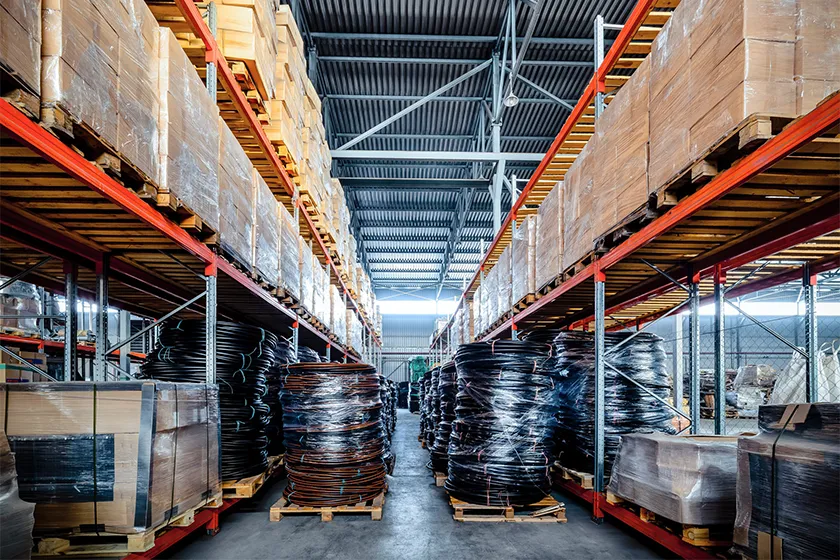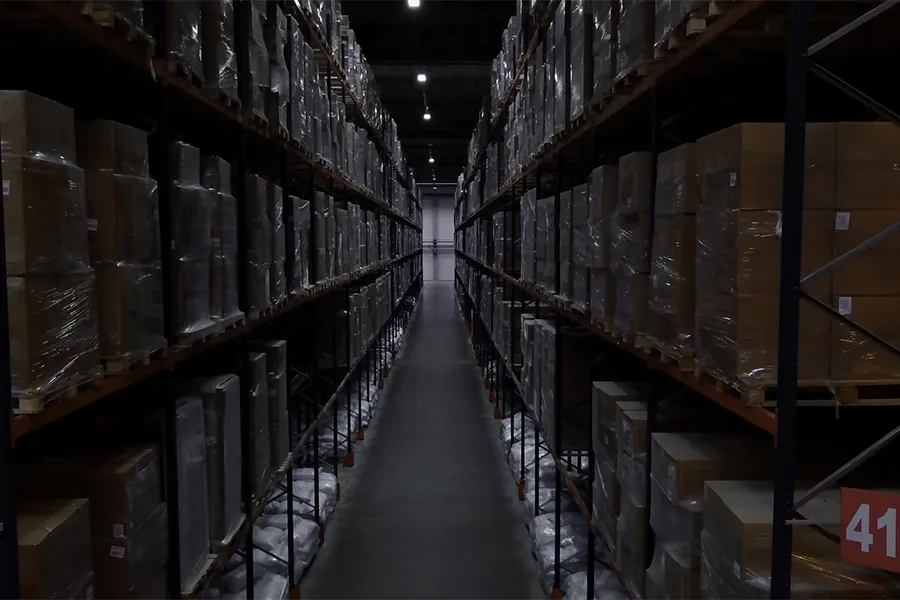Warehousing logistics, as one of the important stages of the supply chain, plays a significant role in improving efficiency and reducing costs. Warehouse logistics processes include receiving goods, storing, inventory management, packaging, transportation, and distribution, the optimization of which, in addition to the speed of providing services to customers, is also effective in reducing human errors and improving the customer experience. For this reason, and given the greater competition in global markets, optimizing warehousing and warehouse logistics processes is of great importance for businesses.

Logistics Warehousing
Logistics Warehousing, as one of the important sub-branches of logistics, deals with all the processes of storing, sorting, packaging, labeling and distributing goods in the supply chain and covers all stages from the time of receipt of the goods to their delivery to the final customer. The goal of logistics warehousing is to optimize the flow of goods and increase the speed of storing and transferring goods, while reducing costs and increasing the level of service to customers. In addition, tools such as warehouse management systems (WMS) help to accurately track and monitor goods and prevent human errors and will be effective in improving warehouse logistics processes.
Problems of Warehouse Logistics
In addition to all its advantages and importance, warehouse logistics also faces problems and challenges that will have a great impact on businesses and the efficiency of a goods supply and distribution system. Below, we have addressed some of the most important problems of warehouse logistics:
- Lack of sufficient space for storing goods, which causes congestion of goods, disruption of access to goods and ultimately reduces the efficiency of warehousing operations.
- Human errors in manual warehousing processes such as incorrect data entry, incorrect selection of goods for shipment, etc., which cause additional costs and reduce customer satisfaction.
- Lack of coordination with other departments such as production, transportation, distribution, etc., which will cause problems such as delays in shipping goods.
- Errors in warehouse inventory management increase storage costs and also the risk of product expiration.

Importance and Benefits of Warehouse Logistics
Warehouse logistics, by providing timely inventory of goods in the required amount and making it available to customers, leads to higher efficiency in warehouse and inventory management. Warehouse logistics plays an important role in the supply chain and inventory management and, with its numerous benefits, affects the efficiency and productivity of businesses. Some of the benefits of warehouse logistics include:
- Optimal inventory management in line with customer needs to prevent shortages or excesses of goods
- Reducing operating costs with precise warehouse management and reducing storage and transportation costs
- Improving delivery speed and time and increasing customer satisfaction
- Preventing waste and expiration of goods, especially in industries such as pharmaceuticals, food and chemical products, etc.
In fact, proper management of warehouse logistics in a business leads to greater customer satisfaction while reducing costs and helping it perform better in competitive markets.
What is the difference between warehousing and warehouse logistics?
Warehousing and warehouse logistics are two related concepts that have differences from each other and each has a different role in the supply chain. In the following, after providing a brief explanation of these two concepts, we will discuss their differences.
Warehousing includes all stages of storing goods and products in warehouses, the main purpose of which is to keep the goods safe and organized until they are needed for distribution or sale. In fact, the main focus of warehousing is on maintaining and managing the inventory of goods.
While warehouse logistics generally deals with optimizing the flow of goods in and out of the warehouse, and its main purpose is to increase the efficiency and effectiveness of the various stages of warehousing, inventory management, distribution of goods and timely delivery to customers.
In fact, it can be said that warehousing is an important part of warehouse logistics that focuses on storing goods, while warehouse logistics deals with the comprehensive management of the flow of goods in the supply chain.
Logistics Warehousing Processes
Logistics Warehousing includes various actions and steps that directly affect warehouse efficiency and costs. For this reason, optimizing each of these processes can help improve efficiency, reduce costs, and increase customer satisfaction. Logistics warehousing processes include various steps, including receiving goods, storing, managing inventory, and shipping goods to customers, etc. We have examined these steps in more detail below:
Receiving goods: This step includes delivering goods and entering them into the warehouse. In this step, information about the goods is recorded, and their quality and quantity are controlled.
- Storing goods: After receiving the goods, they must be placed in the appropriate parts of the warehouse so that they are easily accessible while making optimal use of the warehouse space.
- Pickup goods: In this step, the goods required to send customer orders are selected and prepared.
- Packaging: Before sending goods and customer orders, each order must be packaged to prepare them for transportation. Proper packaging also prevents damage to goods during transportation and handling.
- Transportation: This stage involves sending packaged goods to their final destination, to customers or distribution centers. This stage helps reduce costs and improve customer satisfaction by planning and selecting the appropriate transportation method.
- Inventory Management: The use of inventory management systems in logistics warehousing helps control inventory and prevents shortages or excess inventory.
- Reverse Logistics Management: Reverse logistics is also one of the warehouse logistics processes and means managing returns, the return of goods from customers to the warehouse or manufacturer.

Summary
Warehousing logistics is not only limited to the proper management and storage of goods in the warehouse, but also to optimizing the flow of goods and information in the supply chain. By using new technologies such as warehouse management systems (WMS) and other smart and new methods, it is possible to significantly increase the efficiency of warehouse operations while reducing costs. On the other hand, warehouse logistics problems such as lack of space, human errors and lack of coordination with other departments have harmed business productivity, which can be largely resolved with the help of warehousing logistics.
Warehouse logistics is also another service of Saina Express Company, and you can contact our experts at Saina Express for more information on this matter.

